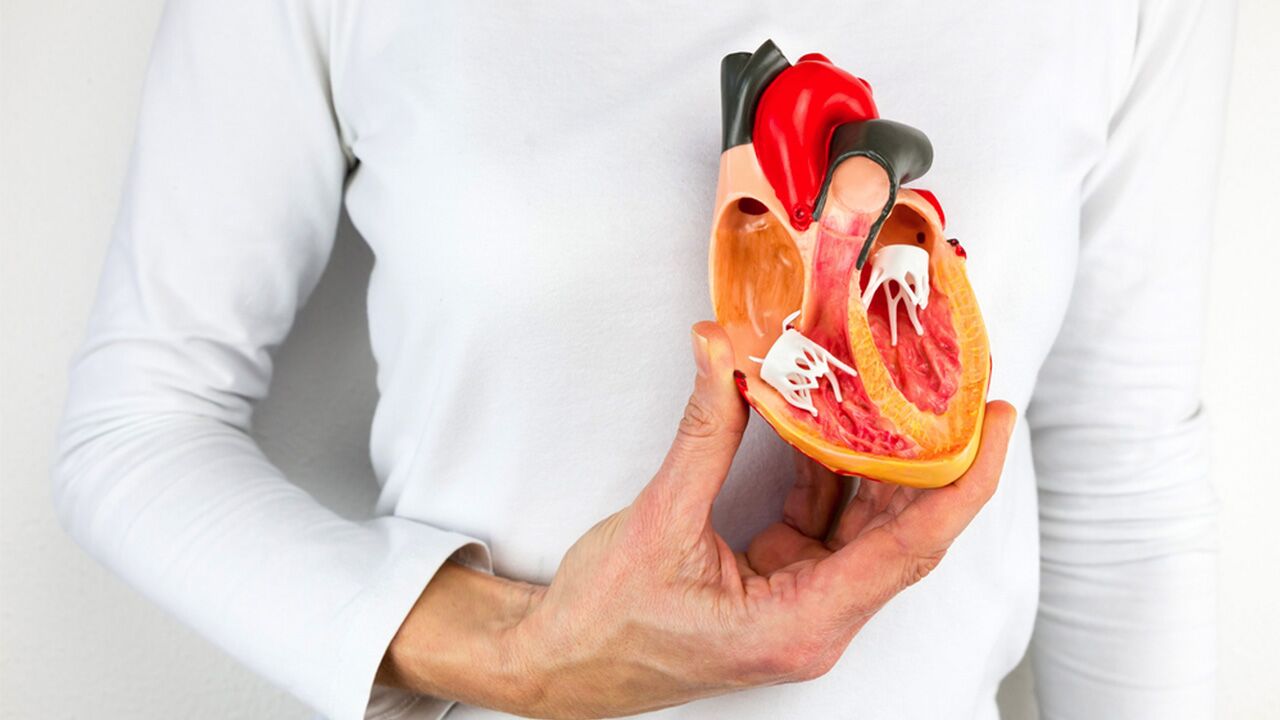How to Prevent Arteriosclerosis—and Possibly Reverse It
 By: by Amino Science
By: by Amino Science

Heart disease is the number one cause of death in the United States, and the majority of these deaths can be attributed to arteriosclerosis. But what is arteriosclerosis, and can it be prevented or possibly even reversed? To find the answers to these questions, we’re going to take a deeper look at this public health problem as well as its causes, risk factors, and treatments. So come with us as we uncover how to prevent arteriosclerosis and protect both your heart and your life.
What Is Arteriosclerosis?
Arteriosclerosis is a condition that results when the arteries that carry blood away from the heart thicken and lose their flexibility. This process occurs slowly—usually over the course of many years—and can eventually lead to restricted blood flow.
If arteriosclerosis progresses to the point where the flow of blood becomes obstructed—as may be seen with coronary artery disease, carotid artery disease, and peripheral artery disease—organs and tissues can become starved of oxygen and nutrients. And this can lead to serious complications like heart attack (from damage to the heart muscle), heart failure, stroke, and gangrene.
Arteriosclerosis Causes and Risk Factors
The exact cause of arteriosclerosis is still unknown, but it’s thought that the condition is related to damage to artery walls. In addition, certain risk factors are known to put an individual at greater risk of developing the disease. These include:
- High blood pressure
- High cholesterol
- Elevated triglycerides
- Tobacco use
- Obesity
- Diabetes
- Inflammation
Types of Arteriosclerosis
Many people use the terms arteriosclerosis and atherosclerosis interchangeably, but arteriosclerosis is actually a broad category that encompasses three specific medical conditions:
- Atherosclerosis
- Arteriolosclerosis
- Mönckeberg medial calcific sclerosis
Atherosclerosis
Atherosclerosis occurs when substances like fat and cholesterol build up on the surface of artery walls. This plaque buildup results in narrowing of the lumen, or opening, which in turn leads to thickening and hardening of the arteries. Of the three types of arteriosclerosis, atherosclerosis is the most common.
Arteriolosclerosis
Arterioles are small blood vessels that branch out from the main artery and lead to capillaries. These small vessels are responsible for regulating both blood flow and blood pressure. And like the arteries themselves, arterioles can also become hardened and thickened.
Mönckeberg Medial Calcific Sclerosis
The most benign form of arteriosclerosis is Mönckeberg medial calcific sclerosis, or Mönckeberg arteriosclerosis, which is most commonly seen in older adults and individuals with diabetes or end-stage renal disease. This type of arteriosclerosis is characterized by diffuse calcium deposits within the middle layer of an artery. A finding of Mönckeberg medial calcific sclerosis is generally considered incidental, as the calcification doesn’t affect the lumen of the blood vessel.
Symptoms of Arteriosclerosis
Because arteriosclerosis develops slowly—sometimes beginning in childhood—most people don’t know they even have it until an artery becomes so narrowed that blood supply is reduced to organs and tissues or a blood clot breaks off and causes a heart attack or stroke.
However, if symptoms are present, they tend to indicate which arteries are affected. For example, symptoms may include:
- High blood pressure
- Shortness of breath
- Temporary vision loss
- Slurred speech
- Chest pain
- Leg pain while walking
- Kidney failure
Diagnosing Arteriosclerosis
To diagnose arteriosclerosis, your health care provider will first perform a physical exam to evaluate for signs of the disease—for example, weak pulse, sounds indicating turbulent blood flow, or decreased blood pressure in an extremity.
Depending on the findings, your health care provider may then decide to conduct a series of tests. These can include:
- Blood tests: Elevated blood sugar or blood cholesterol levels can indicate an increased risk of arteriosclerosis.
- Electrocardiogram: An EKG is a noninvasive test that measures the electrical activity of the heart. This test can detect whether a heart attack is currently in progress or has previously occurred.
- Ultrasound: This noninvasive procedure uses sound waves to measure both blood pressure and flow of blood in the arteries.
- Exercise stress test: This test measures the heart’s response to stress during exercise and can identify abnormalities in blood pressure and heart rate and rhythm as well as symptoms such as shortness of breath and chest pain.
- Ankle-brachial index: This test compares blood pressure in the ankle with blood pressure in the arm to look for differences that may indicate a buildup of plaque.
- Cardiac catheterization: This invasive procedure uses a flexible tube called a catheter to inject dye into the heart, which is then imaged using coronary angiography to look for areas of blockage as the dye moves through the heart and its major vessels.

Treating and Reversing Arteriosclerosis
If you’ve been diagnosed with arteriosclerosis, treatment will depend on the severity of your condition. In all but the most severe cases, treatment usually consists of lifestyle changes, such as quitting smoking, exercising regularly, eating a healthy diet, maintaining a healthy weight, and managing stress.
However, in more advanced cases, medications may be prescribed as well. The most commonly prescribed medications for arteriosclerosis are:
- Cholesterol-lowering drugs: These medications work by lowering levels of low-density lipoprotein (LDL), the so-called “bad” cholesterol. The most commonly prescribed drugs for lowering LDL cholesterol are statins.
- Anti-platelet medications: These medications help keep platelets from clumping together and forming blood clots. The most widely prescribed medication for this purpose is aspirin.
- Blood pressure medications: Several types of medications may be used to lower blood pressure levels. Beta blockers, angiotensin-converting enzyme (ACE) inhibitors, calcium channel blockers, angiotensin II receptor blockers (ARBs), and diuretics are all commonly used for this purpose.
In situations in which arteriosclerosis has advanced to the point where symptoms are severe or a blockage has become limb- or life-threatening, surgery will likely be required. Some of the most commonly used procedures to treat arteriosclerosis are:
- Angioplasty and stent placement: In this procedure, a tiny balloon is used to widen the blocked artery, followed by placement of a wire mesh tube to help keep the artery open.
- Coronary artery bypass graft: A CABG involves using healthy arteries from the chest wall or veins from the legs to bypass blocked coronary arteries.
- Endarterectomy: This procedure is most often performed on the carotid arteries in the neck and involves surgically removing plaque buildup from the artery walls.
How to Prevent Arteriosclerosis
Preventing arteriosclerosis comes down, in large part, to making healthy lifestyle choices. While you may not be able to do anything about a family history of heart disease, there are a variety of lifestyle changes that can help prevent or slow the progression of the disease. These include:
- Eating a heart-healthy diet: The cornerstone of good health is a nutritious diet, and studies have shown that diets that emphasize fruits, vegetables, lean proteins, and whole grains and reduce or eliminate saturated and trans fats, sugar, artificial sweeteners, and refined carbohydrates can help lower cholesterol, blood pressure, and blood sugar and control weight.
- Increasing physical activity: Regular exercise not only builds muscle, improves circulation, and increases oxygen levels in the blood, but also encourages the body to perform its own form of bypass surgery by actually creating new blood vessels to bypass blocked arteries. When upping your physical activity, a good number to shoot for is 30 minutes a day most days of the week. And to make this easier to accomplish, exercise can be broken up into 10-minute blocks.
- Maintaining a healthy weight: If you’re overweight, losing just a few pounds can lead to decreases in blood pressure, cholesterol, and blood sugar levels—an achievement that can be made easier by simply eating a heart-healthy diet and increasing physical activity.
- Quitting smoking: The chemicals in tobacco smoke have a negative effect on every organ and tissue in the body, including the endothelium that lines the walls of your blood vessels. Smoking is also one of the most preventable risk factors for arteriosclerosis, and quitting can significantly reduce the progression of the disease.
- Managing stress: Studies have shown that chronic stress triggers an immune response that leads to inflammation, long-term exposure to which is associated with the development of disease, including arteriosclerosis. What’s more, a 2014 study found that chronic stress changes the nature of arterial plaque, making it even more likely to break off and cause a heart attack or stroke. However, practicing relaxation techniques like meditation, deep breathing, and yoga can help reduce the stress hormones that contribute to these negative changes.
Incorporating more amino acids into your diet can also help you in your efforts to maintain a healthy lifestyle, as these building blocks of life are involved in almost every biological process, including:
- Neurotransmitter production
- Muscle growth and repair
- Blood flow regulation
- Energy production
- Immune system regulation
- Fat metabolism
- Blood sugar regulation
As you might assume from this list, amino acids likely play a role in the development of arteriosclerosis as well. In fact, a 2015 study found that a greater intake of dietary amino acids was associated with a concomitant reduction in both blood pressure and arterial stiffness in women.
And a 2018 study demonstrated that amino acids not only assist the body in efficiently metabolizing fats, but one amino acid in particular, leucine, also has the ability to inhibit the accumulation of lipids, which has a direct impact on the development of arteriosclerosis.
Both of these studies provide exciting evidence of the role amino acids may play in the treatment and prevention of arteriosclerosis. However, it’s important to remember that amino acids work in concert with one another, so to ensure the best results, always look for a formula that contains a balanced mixture of all nine essential amino acids. Look no further than Life, Amino Co's active aging blend designed to strengthen heart health, increase blood flow, and lower cholesterol. Click here to learn more.

Up to 25% off Amino
Shop NowTAGS: conditions
Join the Community
Comments (0)
Most Craveable Recipes




 833-264-6620
833-264-6620



















